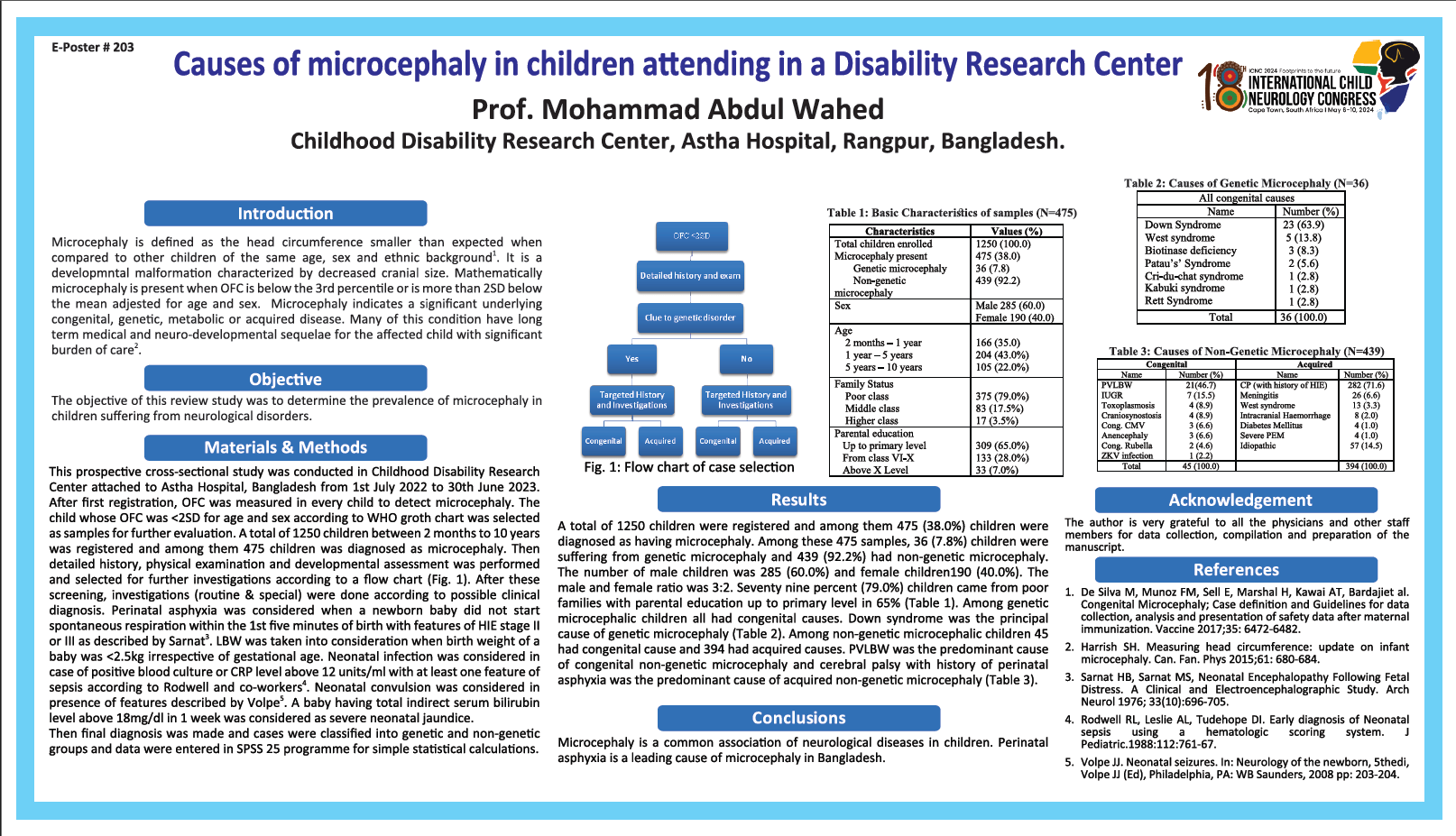Causes Of Microcephaly In Children Attending In A Disability Research Center
Background: Microcephaly indicates a significant underlying congenital, genetic, metabolic or acquired disease. Many of this condition have long term medical and neuro-developmental sequelae for the affected child with significant burden of care.
Methodology: This cross-sectional study was conducted in Childhood Disability Research Center attached to Astha Hospital, from 1st July 2022 to 30th June 2023. After first registration OFC was measured in every child to detect microcephaly. A total of 1250 children between 2 months to 10 years was registered and among them 475 children was diagnosed as microcephaly. Then detailed history, physical examination was performed and selected for further investigations. Investigations were done according to possible clinical diagnosis. Then final diagnosis was made and cases were classified into genetic and non-genetic groups and data were entered in SPSS 25 programme simple statistical calculations.
Results: A total of 1250 children were registered and among them 475 (38.0%) children were diagnosed as having microcephaly. Among these 475 samples 49 (10.2%) children were suffering from genetic microcephaly and 426 (89.8%) had non-genetic microcephaly. Down syndrome was the principal cause of genetic microcephaly. Perinatal asphyxia was the predominant cause of non-genetic microcephaly.
Conclusion: Microcephaly has a common association of neurological diseases in children. Perinatal asphyxia is a leading cause of microcephaly.
M A Wahed
Astha Hospital, Rangpur
Bangladesh
